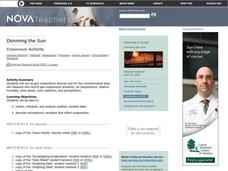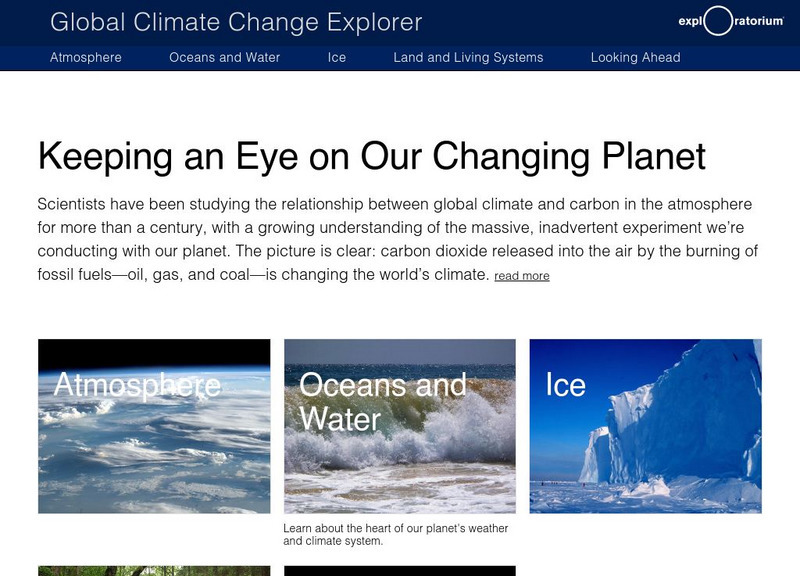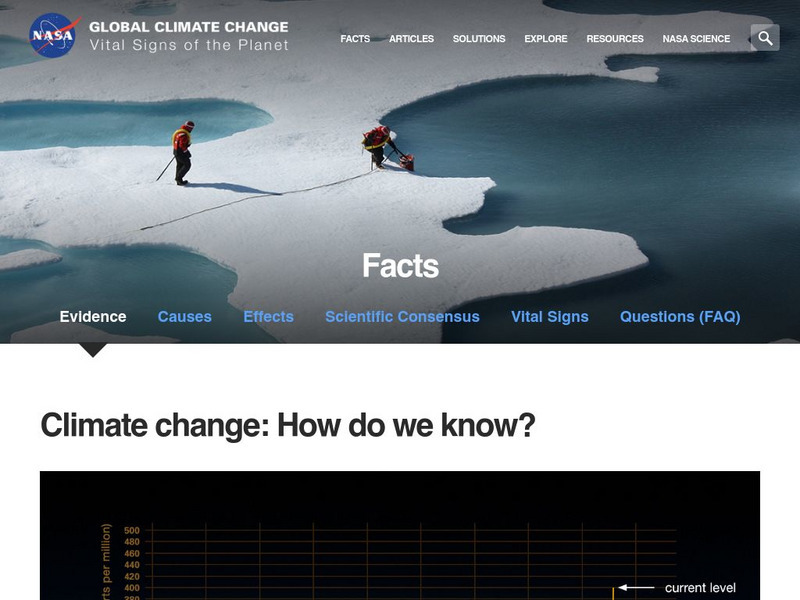Curated OER
Glaciers Worksheet #1
The landscape impacted by glacier activity is drawn at the top of this worksheet. Ten multiple choice questions follow, some relating to the diagram, and some about the quality of soil left by glaciation. It is not often that you come...
Curated OER
The Awful 8: A Play
Students perform a play that presents the causes and effects on people and the environment of the eight major air pollutants.
Curated OER
Breaking News English: The Year 2007 to be the Hottest Ever
In this English worksheet, students read "The Year 2007 to be the Hottest Ever," and then respond to 47 fill in the blank, 7 short answer, 20 matching, and 8 true or false questions about the selection.
Curated OER
Dimming the Sun
Students collect, interpret and analyze weather variable data. They describe atmospheric variables that affect evaporation. Students create graphs and analyze the information collected.
Curated OER
The Awful 8: The Play
Students become aware of the cause and effects of different air pollutants. They present a play about the different pollutants.
Curated OER
Current Interactions
Students design an experiment to see how wind, temperature, and salinity work together to influence ocean currents and present it in a report format. They explain to their classmates how experiment findings relate to ocean currents.
Curated OER
Recreating the Greenhouse Effect
Students recreate the greenhouse effect. In this environmental science lesson, students gather materials and follow procedures to create the greenhouse effect on a small scale.
Exploratorium
Exploratorium: Global Climate Change: Research Explorer
Explore scientific data relating to the atmosphere, oceans, areas covered by ice, and living organisms in all these domains. Interpret past and present climate data to predict future climate change and its possible effects.
NASA
Nasa: Climate Change: How Do We Know?
Provides extensive evidence of the many ways scientists have observed and recorded climate change on a rapid, global scale. Lists different events observed, such as receding ice sheets and evidence in rocks, and presents graphs, images,...
University Corporation for Atmospheric Research
Ucar: Little Ice Age: Dark Skies: Volcanic Contribution to Climate Change
In this activity, young scholars learn how volcanic eruptions affect global climate.
Science Education Resource Center at Carleton College
Serc: Quantitative Reasoning and Analytical Writing in a Global Climate Change
In this lesson students use Microsoft Excel to manipulate and statistically analyze large climate databases of precipitation., temperature, stream discharge, tree ring data, ice core data, and ENSO to determine climate relationships and...
PBS
Pbs Learning Media: Greenland Ice Sheet Project 2: A Record of Climate Change
Using images and graphs, this interactive resource illustrates scientists' efforts to study Earth's climatic history for the last 250,000 years by drilling into the Greenland Ice Sheet and examining ice cores. Includes background reading...
Exploratorium
Exploratorium: Global Climate Change: Cryosphere
Examine the effects climate has on the snow and ice covered cryosphere and see live data gathered from the North and South Poles.
University Corporation for Atmospheric Research
Ucar: Why Does Climate Change?
Factors that have the power to change global climate can be natural, like volcanic eruptions and changes in solar energy, or caused by humans, like the addition of greenhouse gases to the atmosphere.
Center for Educational Technologies
Cet: Exploring the Environment: Ice Caps and Sea Levels
Students have just completed climate science fieldwork studying Earth's ice caps and sea levels. Analyze the data to present a report to the U.S. Panel on Global Climate Change.
Climate Literacy
Clean: Climate Change and Arctic Ecosystems
Students learn about how climate change is affecting the Arctic ecosystem, and then investigate how this change is impacting polar bear populations. Students analyze maps of Arctic sea ice, temperature graphs, and polar bear population...
BBC
Bbc: News: Guide to Climate Change
The BBC offers an interactive guide to climate change, including a sliding scale depicting climate change from 1885 to 2099, animation which explores how the greenhouse effect works, and detailed diagrams exploring the carbon cycle, the...
NASA
Nasa: 2016 Climate Trends Continue to Break Records
NASA studies of global surface temperatures and Arctic sea ice extent provide data to determine climate changes on Earth. Research for only the first half of 2016 identifies the year as being one of the hottest on record.
University Corporation for Atmospheric Research
Ucar: The Water Cycle and Climate Change
Water moves from place to place through the water cycle, which is changing as climate changes. Learn how the water cycle is changing as global temperatures rise.
University of Wisconsin
Uw: Probabilities, Uncertainties and Units Used to Quantify Climate Change
This resource engages learners in using scientific data to analyze a 150-year dataset from Lake Mendota in Madison Wisconsin reflecting seasonal ice cover.
PBS
Pbs: Scientific American Frontiers: Little Ice Age
Did you know there was a global 'Little Ice Age' around the time Columbus sailed across the Atlantic? Climatologists have documented changes in temperature and how countries and people around the world were affected. What caused the LIA?...
Other
Geoscience Research Institute: The Little Ice Age
This very detailed article examines the long-term climate changes throughout the world. Discusses agriculture and provides graphs and illustrations. Includes lots of scientific discussion.
Other
Digital Library for Earth System Education: Changing Sea Level
A suite of lessons lead inquiry-based exploration of melting sea ice and evidence that it is affecting sea level, namely glacial evidence, geologic evidence, fossil evidence, and isotopic evidence.
Climate Literacy
Clean: How Does Melting Ice Affect Sea Level?
Middle schoolers investigate how sea levels might rise when ice sheets and ice caps melt by constructing a pair of models and seeing the effects of ice melt in two different situations.






















